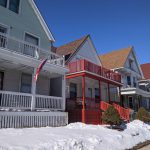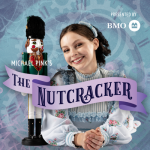As Parks Reopen amid COVID-19 Crisis, Minneapolis Named Best City Park System in U.S.
Milwaukee Ranks 28th, Falling Four Spots from 2019’s 24th Place Finish
Annual ParkScore® Index Reports Sharp Increase in Park and Trail Use, but Experts Sound Alarm over Park Inequities and Risk of Budget Cuts
Milwaukee, Wis. – As state and municipal leaders continue reopening parks and open spaces as the world weathers the COVID-19 pandemic, The Trust for Public Land announced that Minneapolis, Minn., reclaimed its position as the nation’s best park system on the annual ParkScore® Index, edging ahead of defending champion Washington DC.
Milwaukee ranked 28th, earning strong marks for park access. According to ParkScore analysts, 90 percent of Milwaukee residents live within a 10-minute walk of a park. In all ParkScore cities, only 72% of residents have 10-minute walk access. However, Milwaukee’s overall ranking was hurt by below-average scores for park acreage and dog park access.
Milwaukee trails and parks are currently open, although most amenities, such as playgrounds and restrooms, are closed. The city has also announced plans to close some roads to motor vehicle traffic to increase outdoor access for pedestrians and cyclists.
The nonprofit organization reported overall progress for parks this year but warned that city park systems have reached a critical tipping point, as widening inequities in equitable park access and COVID-related budget cuts risk irreversible damage in 2020 and beyond.
“When stay-at-home orders permitted, people increasingly turned to parks, trails, and public open spaces to connect with nature, exercise, and enhance their mental and physical health. Residents deeply value parks, but continued inequity and the risk of future budget cuts threaten severe damage to the park systems that make many cities so livable,” says Diane Regas, President and CEO of The Trust for Public Land.
PARKSCORE RANKINGS RELEASED FOR 2020
According to the Trust for Public Land’s ninth annual ParkScore® index, Minneapolis, Minn., has the best city park system in the country. The city pulled slightly ahead of 2019 champion Washington, DC, largely because of new park acquisitions and strategic expansions. DC fell to second, and St. Paul, Minn., finished third. Minneapolis has held the top spot in four of the past five years. The annual ParkScore Index evaluates park systems in the 100 most populous U.S. cities.
Boston, Mass., reached the Top Ten for the first time since 2016, landing in ninth place and pushing rival New York into 11th position. Boston and San Francisco, Calif. (eighth place), are the only ParkScore cities where 100 percent of residents have a park of public open space within a 10-minute walk of home.
Boise, Idaho, defended its title as the best park system for dogs, with a nation-leading 6.0 dog parks per 100,000 residents, narrowly beating Portland, Ore. Irvine, Calif., received top marks for basketball hoops, Madison, Wis., scored best for playgrounds, and Cleveland, Ohio, earned top marks for splash pads and other water features.
The number of playgrounds increased nationally by 3.6 percent since last year, largely because of “shared use” agreements that open school playgrounds for neighborhood use after school hours and on weekends. The number of dog parks increased by nearly four percent, continuing the trend first reported by The Trust for Public Land five years ago.
INEQUITY AND COVID-RELATED BUDGET CUTS TOP PARKSCORE CONCERNS
ParkScore reports significant inequities in park access between large city park systems. For example, more than 98 percent of residents in ParkScore’s three highest ranking park systems (Minneapolis, Washington, and Saint Paul) enjoy 10-minute walk access to a park, compared to 47 percent in the three lowest ranking systems (Charlotte, N.C., Mesa, Ariz., and Oklahoma City, Okla.).
“Across the United States, 100 million people – including 28 million children – lack access to a quality park close to home. These inequities exist not only between cities but also within them. Low-income neighborhoods do not get their fair share of park investment, which is a missed opportunity to prevent long-term health and climate inequities. At the Trust for Public Land, we are striving for a park-rich future that offers inclusive public space for everyone to lead healthier, happier, lives,” says Diane Regas, President and CEO of The Trust for Public Land.
“Parks are a critical part of health and wellness—reducing anxiety, stress, and depression and improving physical health—all the more necessary during this public health emergency,” says Sadiya Muqueeth, DrPH, MPH, Director of Community Health at the Trust for Public Land. “Sunlight, fresh air, exercise, and access to nature all have a positive effect on our physical health and emotional wellbeing.”
Analysts at The Trust for Public Land also warned that the economic downturn caused by the COVID-19 pandemic will strain municipal budgets and threaten progress on parks.
“While few cities have announced budget plans for 2021 and beyond, park advocates are gearing up for a fight,” said Bill Lee, Senior Vice President for Policy, Advocacy and Government Relations at The Trust for Public Land. “We encourage the federal government to provide relief to struggling park systems in the next recovery bill. We need our parks, and we will not allow park systems to be collateral damage from the COVID-19 pandemic.”
Following the 2007-2008 economic crisis, parks budgets were slashed across the nation by approximately 20 percent, which slowed new park acquisition and improvements for several years.
PARKSCORE METHODOLOGY AND RANKINGS
ParkScore rankings are based equally on four factors: park access, which measures the percentage of residents living within a 10-minute walk of a park; park acreage, which is based on a city’s median park size and the percentage of city area dedicated to parks; park investment, which measures park spending per resident; and park amenities, which counts the availability of six popular park features: basketball hoops, off-leash dog parks, playgrounds, “splash pads” and other water play structures, recreation and senior centers, and restrooms.
According to The Trust for Public Land, the 10 highest ranking park systems in the United States are:
Rank City ParkScore (Max: 100)
1. Minneapolis, MN 85.3
- Washington, DC 83.3
- Saint Paul, MN 82.5
- Arlington, VA 81.5
- Cincinnati, OH 80.6
- Portland, OR 79.8
- Irvine, CA 79.6
- San Francisco, CA 78.9
- Boston, MA 76.5
- Chicago, IL 76.0
The lowest-ranking park systems are:
- Hialeah, FL 33.1
- Baton Rouge, LA 32.0
- Fresno, CA 31.8
- Lubbock, TX 31.6
- Ft. Worth, TX 31.2
- Charlotte, NC 29.8
- Mesa, AZ 29.0
- Oklahoma City 23.8
Fort Wayne, Ind., and Indianapolis, Ind., declined to participate in ParkScore 2020 and were not ranked. Gilbert, Ariz., was not ranked because the necessary data was unavailable.
The ParkScore Index uses advanced GIS (Geographic Information Systems) computer mapping technology to create digital maps evaluating park accessibility. Instead of measuring distance to a local park, the rating system’s GIS technology considers the location of park entrances and physical obstacles to access. For example, if residents are separated from a nearby park by a major highway, the ParkScore Index does not count the park as accessible to those residents, unless there is a bridge, underpass, or easy access point across the highway. The Trust for Public Land collaborated with GIS industry leader Esri on GIS design and implementation.
Municipal leaders use ParkScore information to guide park improvement efforts, studying park access on a block-by-block basis and pinpointing the areas where new parks are needed most. The ParkScore website, www.tpl.org/parkscore, is free and available to the public, empowering residents to hold their elected leaders accountable for achieving equitable access to quality parks for all.
About the Trust for Public Land
The Trust for Public Land creates parks and protects land for people, ensuring healthy, livable communities for generations to come. Millions of people live within a 10-minute walk of a Trust for Public Land park, garden, or natural area, and millions more visit these sites every year. To support The Trust for Public Land and share why nature matters to you, visit www.tpl.org.
NOTE: This press release was submitted to Urban Milwaukee and was not written by an Urban Milwaukee writer. While it is believed to be reliable, Urban Milwaukee does not guarantee its accuracy or completeness.
Mentioned in This Press Release
Recent Press Releases by The Trust for Public Land
The Trust for Public Land’s 2019 ParkScore® Index Names Washington, DC, as Best City Park System in USA, Unseating Three-Time Defending Champion Minneapolis
May 21st, 2019 by The Trust for Public LandMilwaukee Places 24th, Earns Strong Marks for Park Access




















